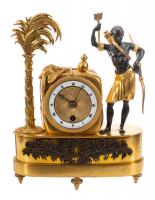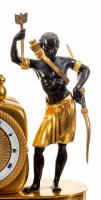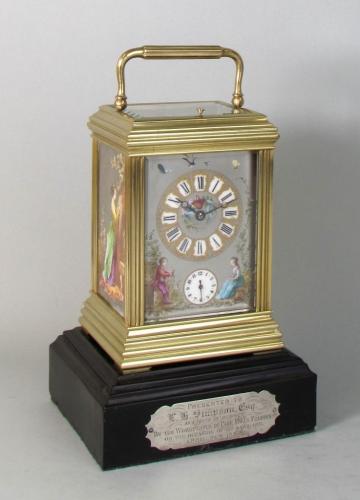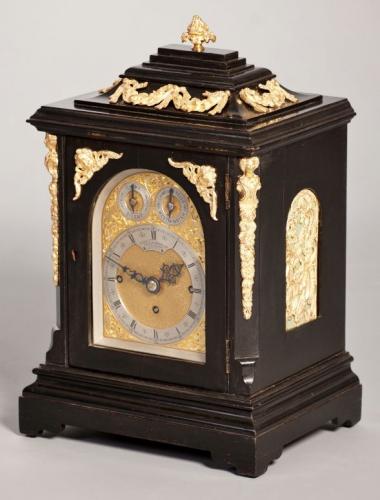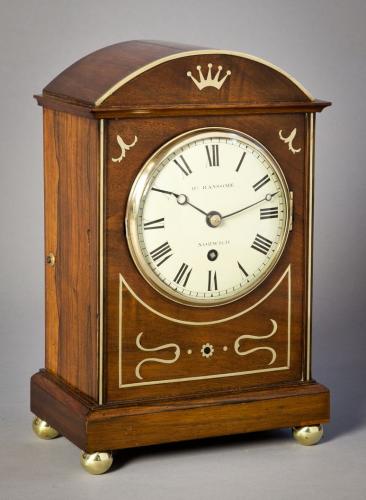
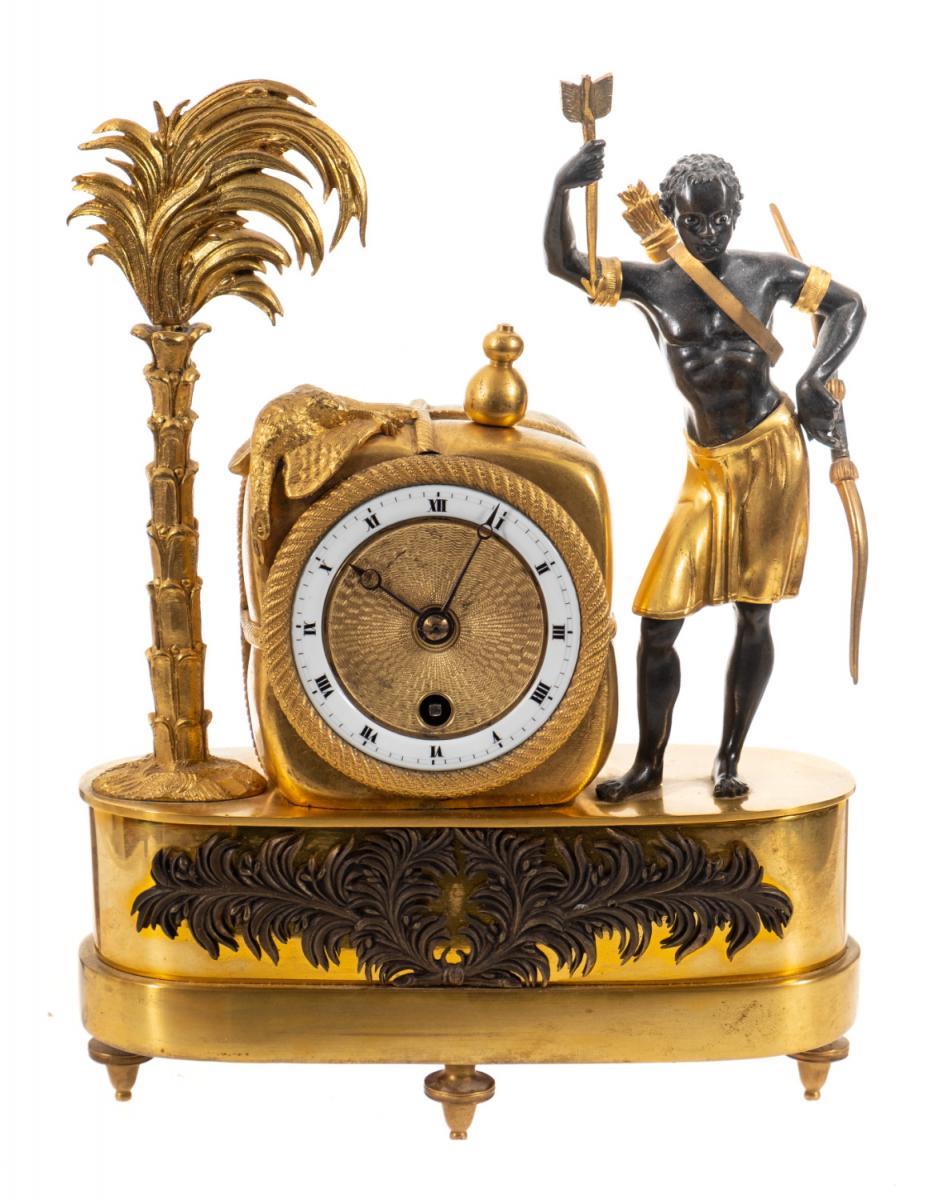
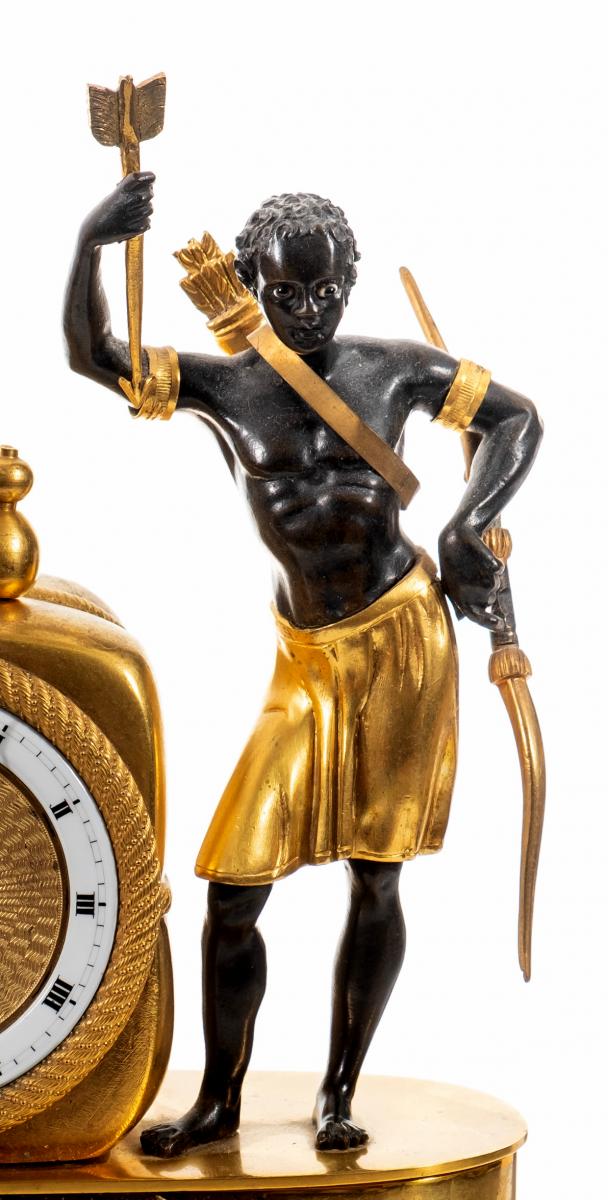
Price on application
This object is eligible for a Certificate of BADA Provenance
The BADA Standard
- Since 1918, BADA has been the leading association for the antiques and fine art trade
- Members are elected for their knowledge, integrity and quality of stock
- Our clients are protected by BADA’s code of conduct
- Our dealers’ membership is reviewed and renewed annually
- Bada.org is a non-profit site: clients deal directly with members and they pay no hidden fees
A French bronze and ormolu Pendule Au Bon Sauvage mantel clock in the style of Jean-Simon Deverberie.
The eight-day duration timepiece movement has a silk suspension. The round engine-turned gilded dial has a white enamel chapter ring with black Roman numerals and blued steel Breguet moon hands.
The ormolu case has a bronze figure of a hunter holding a bow and arrow with a quiver of arrows to his back, wearing a gilded skirt and with inset glass eyes, standing beside a water flagon and dead game bird lying on a bale and with a gilded palm tree to the side, the oval base with an applied bronze floral mount to the front.
This style of clock first came to fruition in the late-18th century and was very much influenced by the writings of authors including Jean-Jacques Rousseau and Bernardin de Saint-Pierre, along with the discovery of the South Sea Islands, where in 1767 the French explorer Bougainville landed in Tahiti followed by Captain Cook two years later. The apparent harmonious lifestyle of the islands inhabitants allowed many in European society to question the morality and corruption that had become prevalent in Europe at that time and brought a period of self awareness. The manufacture of this style of clock also coincided with the abolition of the slave trade in France with the Convention Decrete in 1793.
Various forms of this clock were produced within this period, often using the same figure but with different themes. One example swaps the palm tree for an anchor and has the figure leaning on a bale, whereas another is known showing the figure pouring a sack of coffee into a barrel which takes the place of the bale.
Reference Pierre Kjellberg Encyclopedie de la Pendule Francais Pub. Les Editions l’Amateur Paris 1997, pages 342-359.
Dimensions
25cmCondition report
Fully restored and guaranteedStock number
1467The BADA Standard
- Since 1918, BADA has been the leading association for the antiques and fine art trade
- Members are elected for their knowledge, integrity and quality of stock
- Our clients are protected by BADA’s code of conduct
- Our dealers’ membership is reviewed and renewed annually
- Bada.org is a non-profit site: clients deal directly with members and they pay no hidden fees


